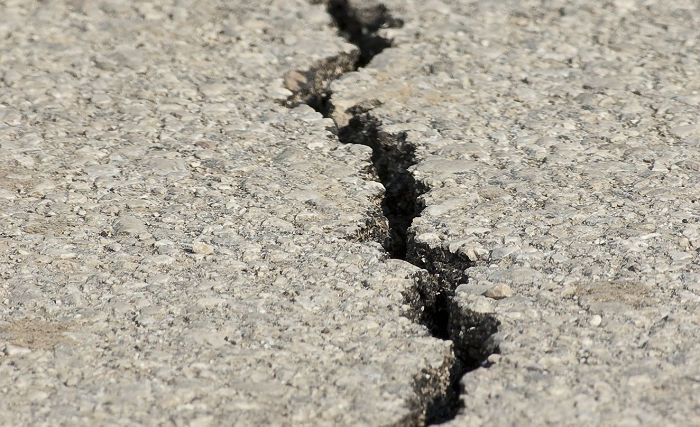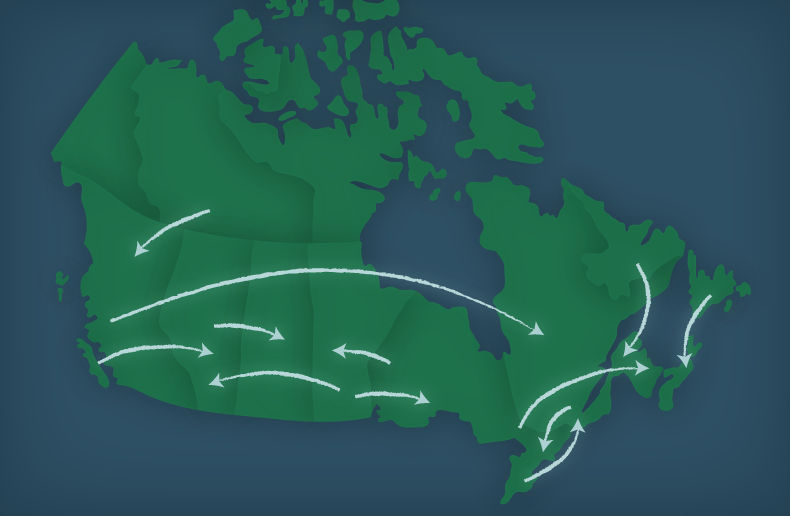Insurers are now more than ready to face the costs arising from a major earthquake, even one so big that it only happens once every 250 years. In just ten short years or so, the industry has pulled itself together from a dismal state of being unprepared to one that exceeds regulatory obligations.
Insurers have more than doubled their capacity to handle earthquake claims since the early 1990’s, according to an analysis at the Insurance Bureau of Canada (IBC). Jane Voll, vice-president and chief economist for the IBC, feels that bodes nothing but good.
“Canadians are now more financially prepared than ever for the next big quake”, she wrote in the September issue of the Perspective quarterly publication. The probability of insurers going bankrupt in the event of an earthquake in B.C. or in Montreal, and being then unable to honour policies, is now very low.
Insurers are prepared to handle up to $11 billion in potential earthquake claims, according to 2004 estimates by the IBC. That is $2.2 billion more than the maximum expected costs of $8.8 billion, a figure based on measuring the maximum claims costs that insurers could face if the sort of massive earthquake came along that only happens once every quarter millennium.
In fact, it is estimated that current insurer capacity would even suffice to meet the insured costs from the type of earth shattering devastation seen only once every 500 years.
Insurers have been required to be able to handle the costs of a once in 250 years event ever since 1998. At the time they were also given 25 years to get financially fit to face the cost from a once in 500 years event.
Ms. Voll says most insurers are already there since building codes are already using 500-year period estimates anyway. “They were already mandated to start moving toward the 500 and some of them just chose to go there faster because they were conservative.”
Not only are insurers ready to face the worst, on top of that it seems the worst isn’t as bad as they thought. Better technology and analysis have shown that, in most cases, analysts were being just a touch pessimistic.
“As it turns out, the latest data on soil conditions coupled with advanced scientific research and new technology, somewhat moderate earlier estimates of Canadian earthquake losses,” says the IBC.
It may be insufficient
The caveat is that the costs may be very different depending on where and how the earthquake emerges. The IBC’s recent analysis of the situation was done based on the experience in British Columbia, a province well known for its risk of earthquakes, and where insured costs would be higher. But an often forgotten reality is that other areas of Canada are at high risk as well.
In 1998, the Office of the Superintendent of Financial Institutions (OSFI), set out base guidelines to help insurers estimate their probable maximum loss in the event of a one in 250 type event. The regulator suggested multiplying the total sums insured by a default loss estimation (DLE) factor.
In B.C., the Richmond and Fraser Delta areas are considered “extreme” hazard zones and were assigned a DLE of 5.88. Comparatively, the whole of Quebec areas with a postal code starting with “H”, also extreme hazard zones, were assigned a DLE of 3.11. The next area with the greatest DLE is in the rest of Greater Vancouver, considered to be a moderate to high earthquake hazard zone.
In a place like Montreal, with a higher population and building density, even smaller shocks can have heavy repercussions. Exactly what the effect would be, however, is up in the air.
Part of the difficulty is that earthquakes in Eastern Canada are different from what they are in Western Canada. The ground is different, and that makes for a different kind of earthquake.
“Out West you have two plates rubbing together,” explains Ms. Voll, “and they push against each other and then boom, you get an earthquake. In Eastern Canada and in the States below us, there is more of a general range of seismic potential, and the earthquakes are not so localized and they spread farther when they happen. You could have an earthquake quite far down in the States and feel it up here.”
From a greater economic point of view, the comparisons get even more complicated. The IBC estimates that $11 billion claims would mean a far higher potential cost to the economy: $33 billion. There are a lot of factors that get rolled into economic cost that can’t really be insured, or that the government self-insures.
“Some of the things that get rolled in there,” Ms. Voll says, “are public infrastructure costs – which the government self-insures – and public buildings and worker’s compensation loss (people that are injured or lose their lives in the disaster), the loss of production in GDP and more. All of those non-private charges produce a much larger number.”
Montreal would arguably suffer higher economic costs, argues Paul Kovacs, executive director for the Institute for Catastrophic Loss Reduction (ICLR), just by virtue of its greater population and building density. On the other hand, though, he feels the worst-case insured loss would be larger in Vancouver than it would be in Montreal, simply by virtue of the fact that far more individuals are insured.
Quebec may suffer most
Whatever happens, it is a sure thing that the economy as a whole will suffer most in terms of total cost, but it will be the uninsured that will be the hardest hit overall. Mr. Kovacs is especially worried about the population in areas like Quebec.
“The big difference,” he says, is that, “in British Colombia there are a lot of people who buy insurance. In Quebec very, very few people buy earthquake insurance. The vast majority in Quebec do not have earthquake insurance, on the personal side.”
In fact, as little as two to three per cent of individual property owners in Quebec carry earthquake insurance. That’s the number put forward by Sylvie Paquette, senior vice-president for corporate development at Desjardins General Insurance, based on her own company’s experience. In commercial lines about 15% to 20% of smaller businesses are covered. Only the largest businesses tend to be fully insured.
Overall, lack of knowledge, or ignorance, of the earthquake risks are a problem for all of Quebec society, says Ms. Paquette. From the government to the insurers to the advisors, it is everyone’s duty to better inform consumers of the risks they take refusing earthquake coverage, she says.
For the moment though, it seems little will be done. According to Ms Paquette, insurers had proposed to the government about ten years back to provide coverage to a certain limit and then have a separate program, government sponsored at least in part, to cover costs. High deductibles were also proposed to limit insurer exposure.
The deductible amounts came through but the government refused to make a deal. Desjardins General, for one, is still willing to conceive some kind of package, she says, but they aren’t putting any energy towards that right now.
There would be no point to spending time and money building an earthquake insurance program right now, she says, since no one would buy it.
The Federal government made it clear way back in the 1970’s that it would not compensate provincial governments that instigated relief programmes in areas where private insurance was obtainable.
“That’s a basic personal responsibility,” says Ms Voll, “just like it is your responsibility to put your seatbelt on when you get in the car. If you don’t, you can’t really cry ‘foul’ because you didn’t take steps to protect yourself.”
Forms of compensation other than insurance is then left in the hands of provincial politicians.







